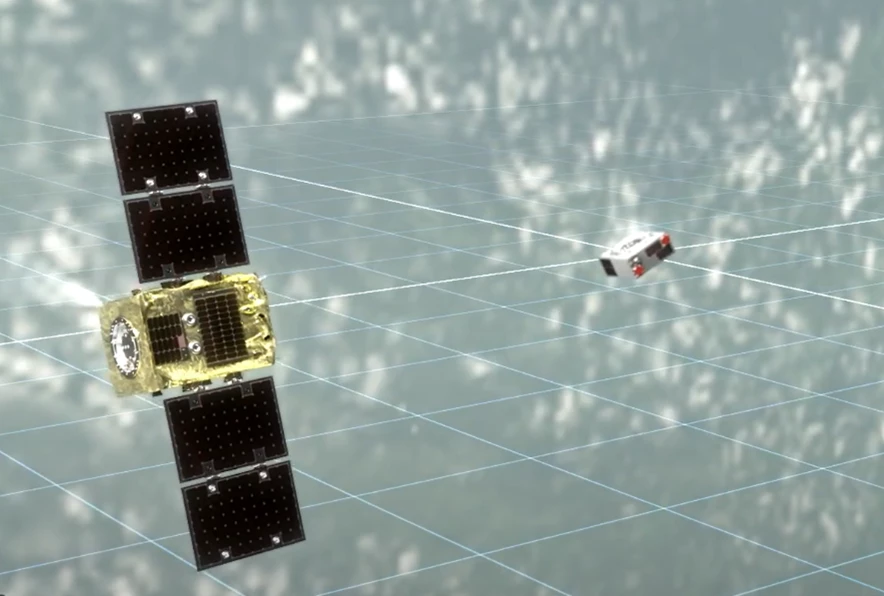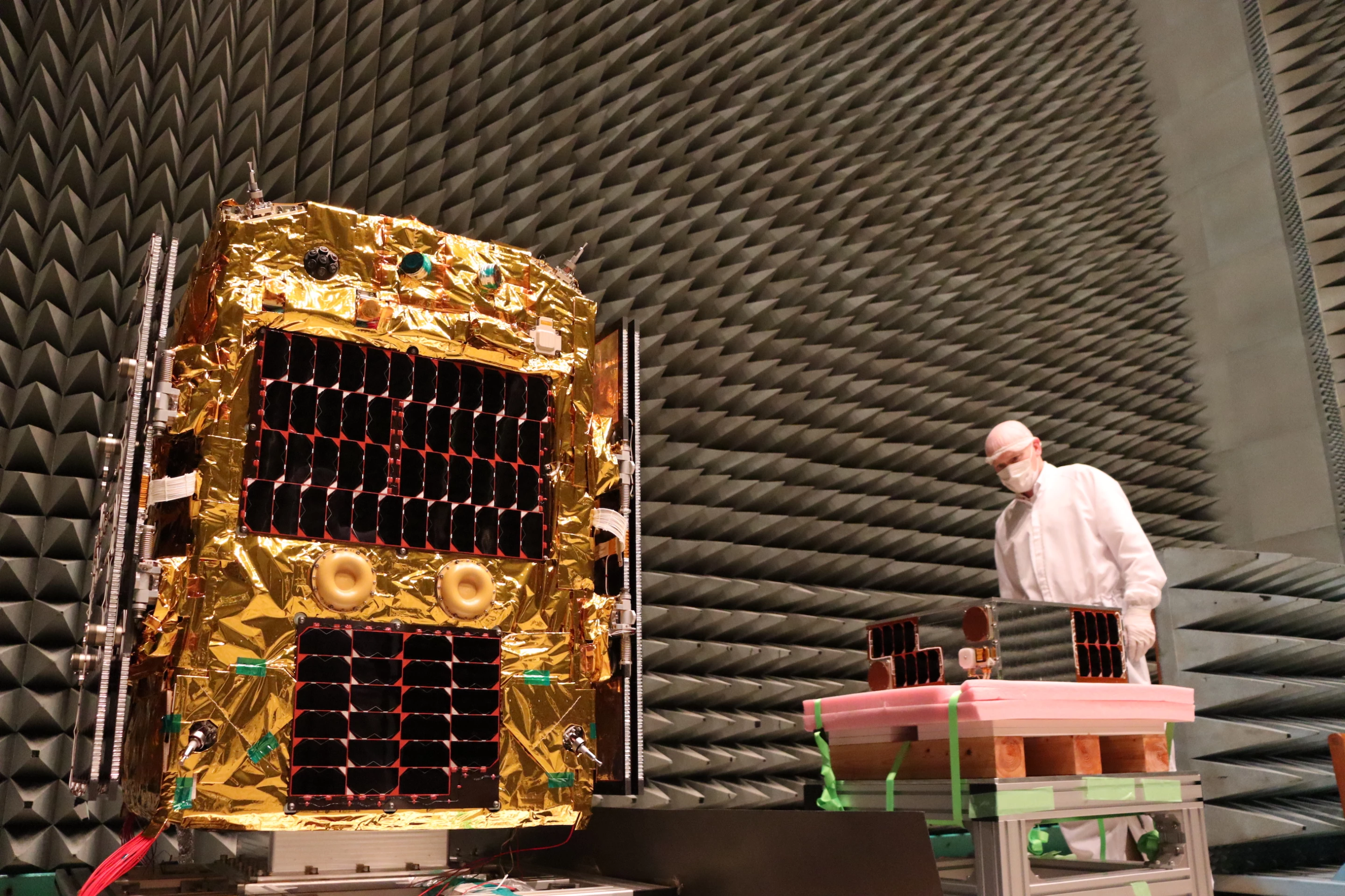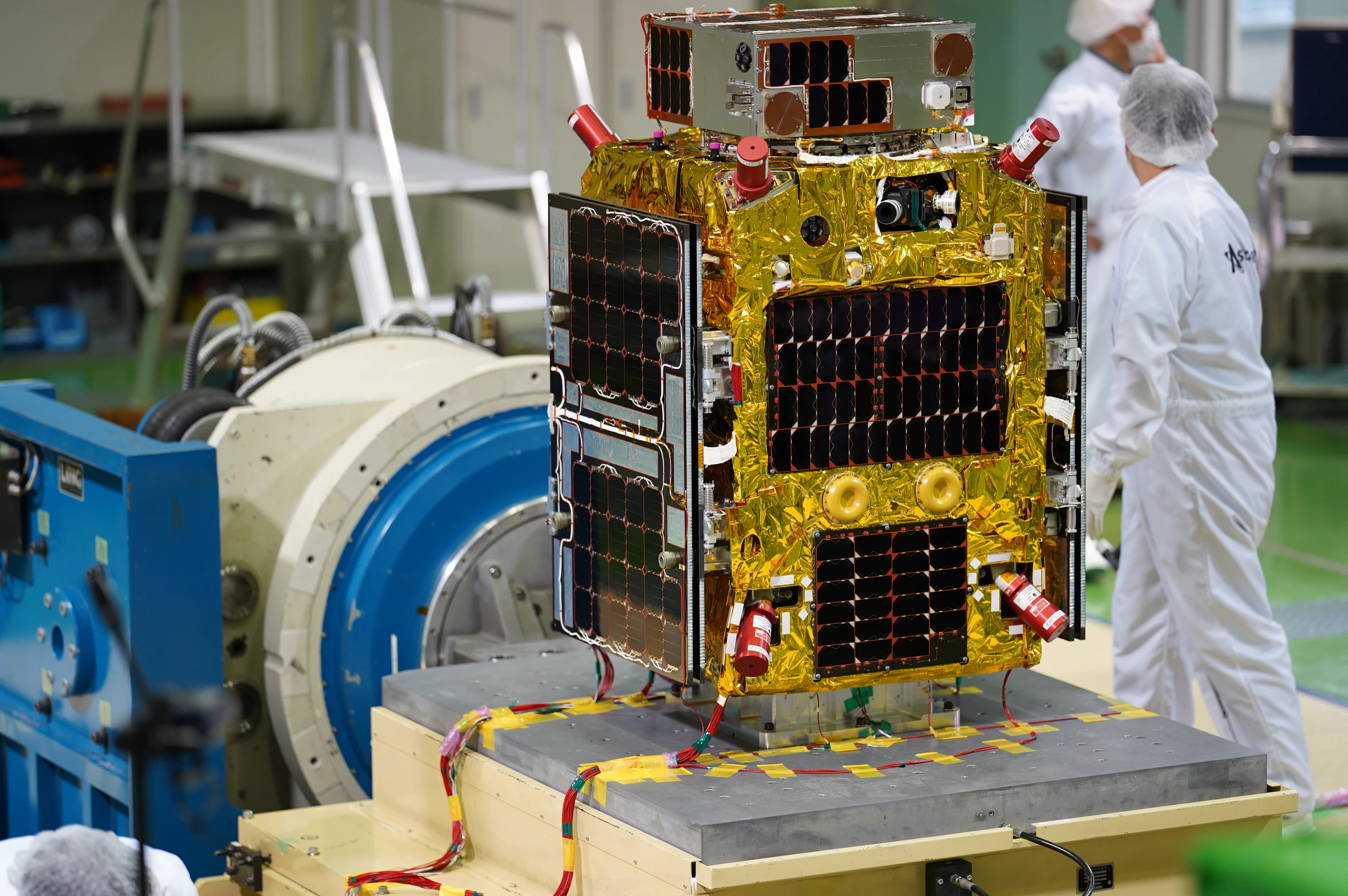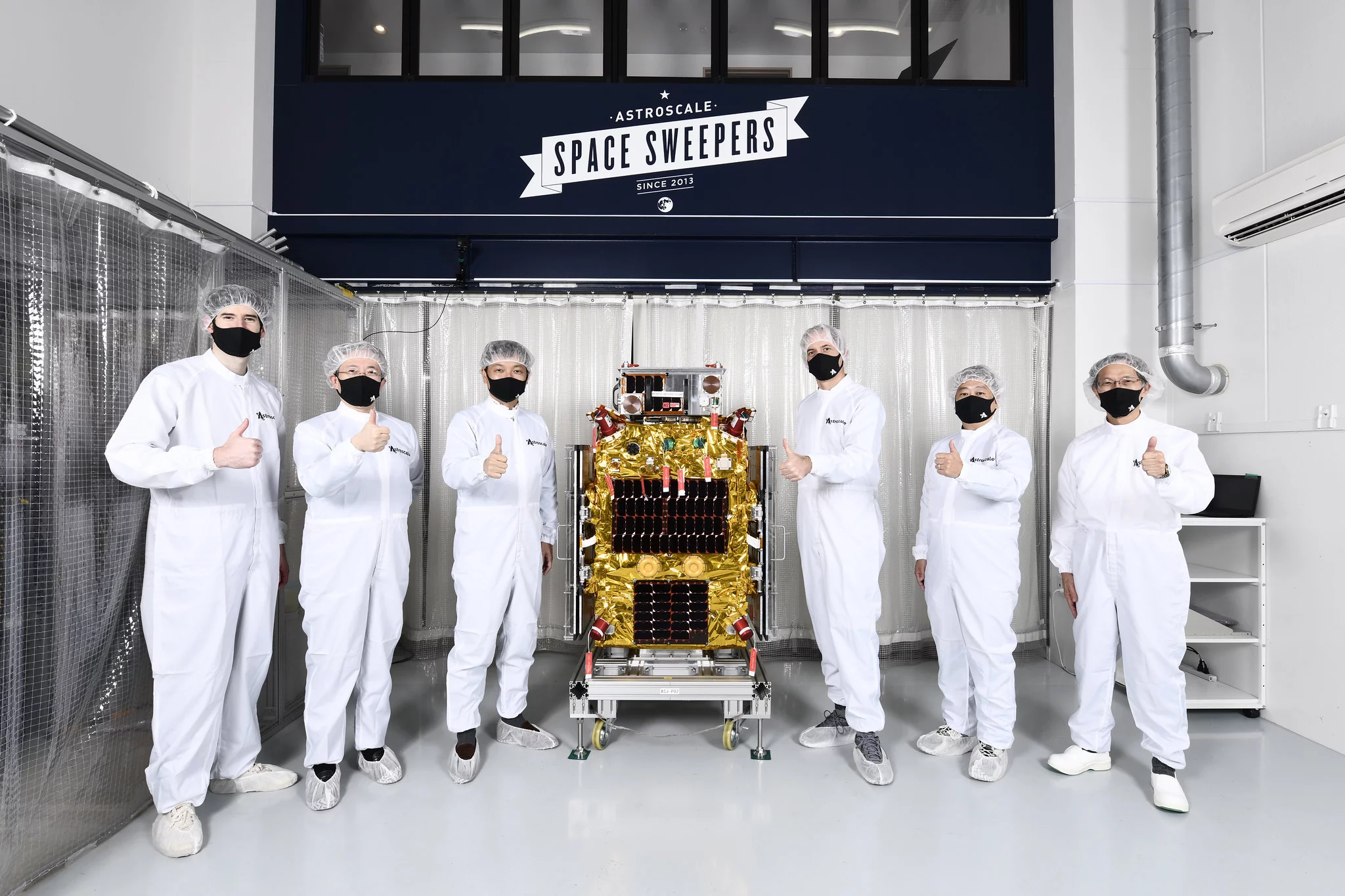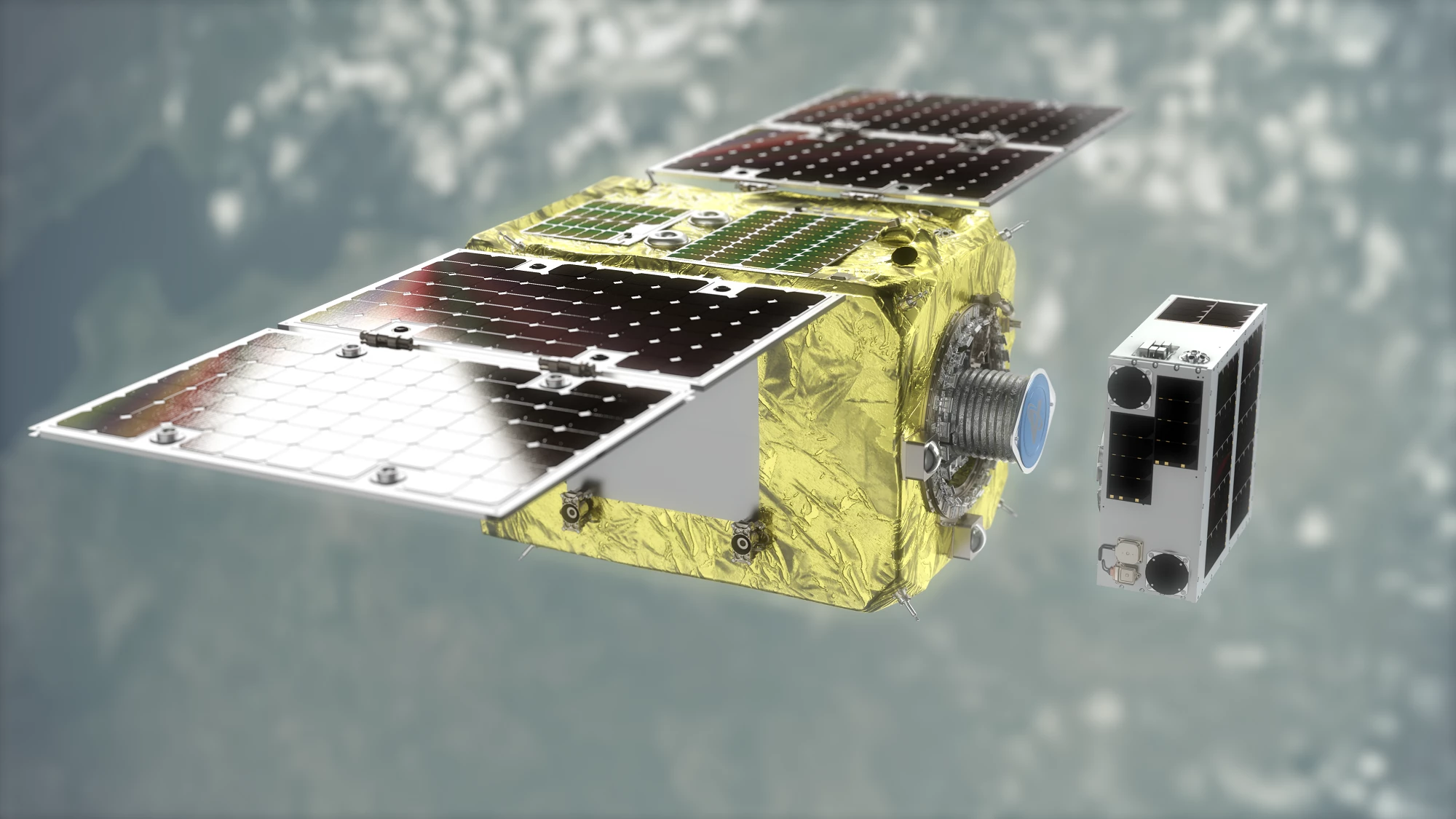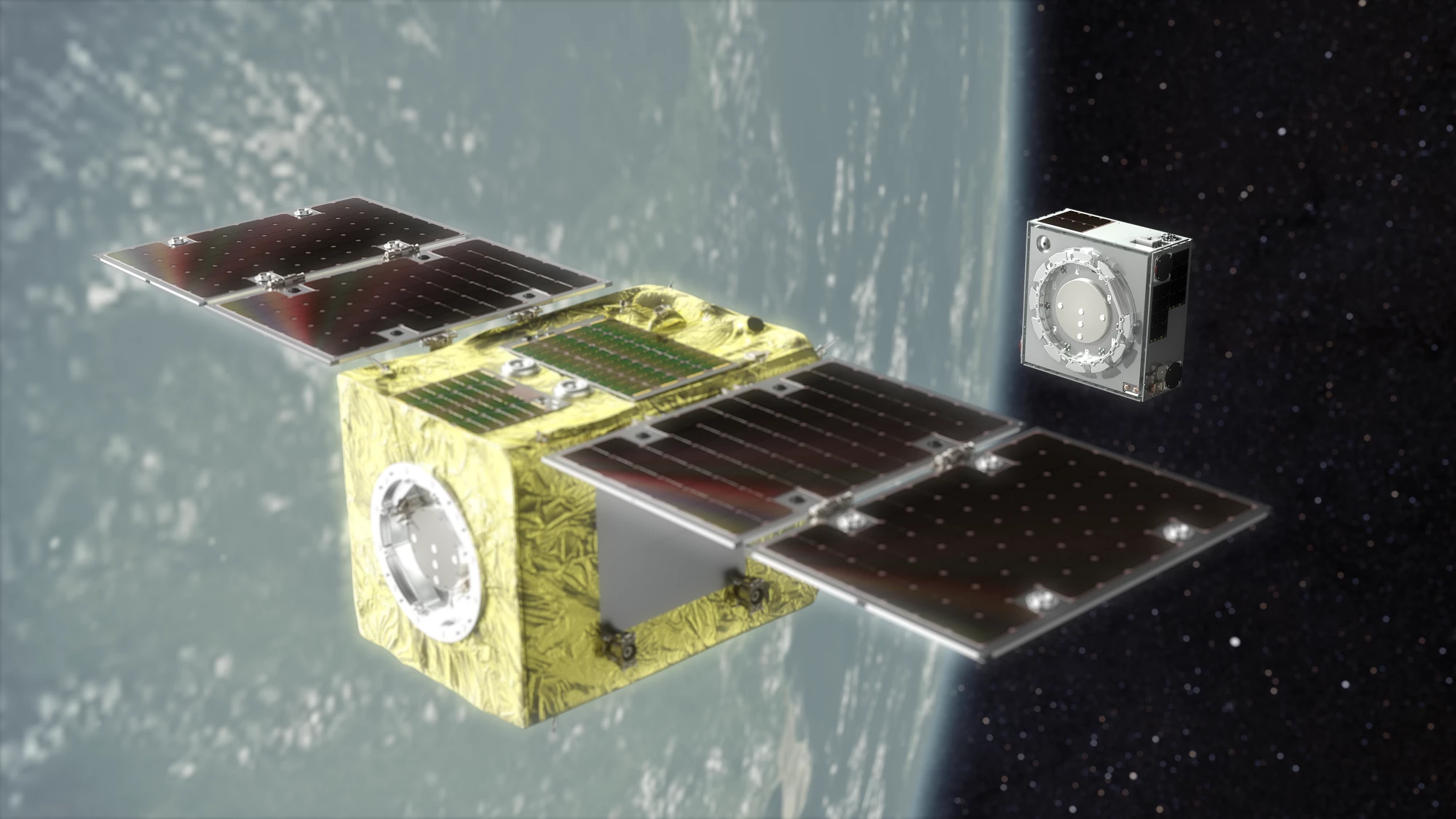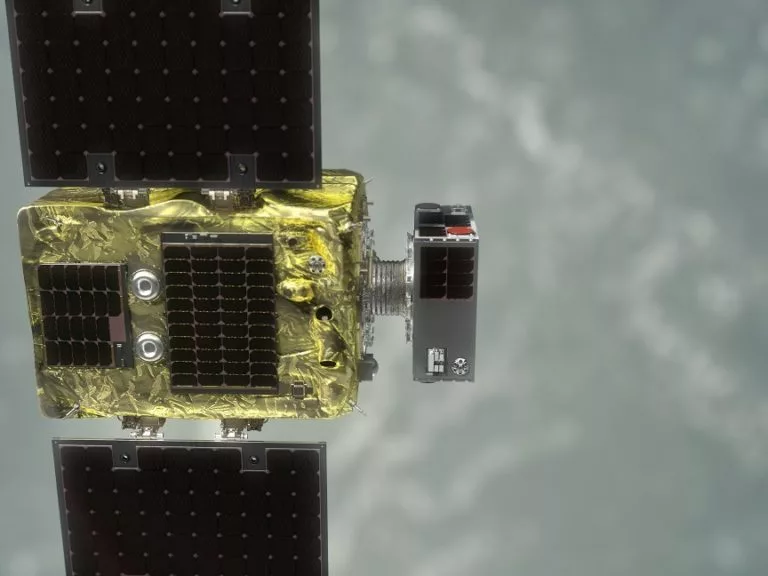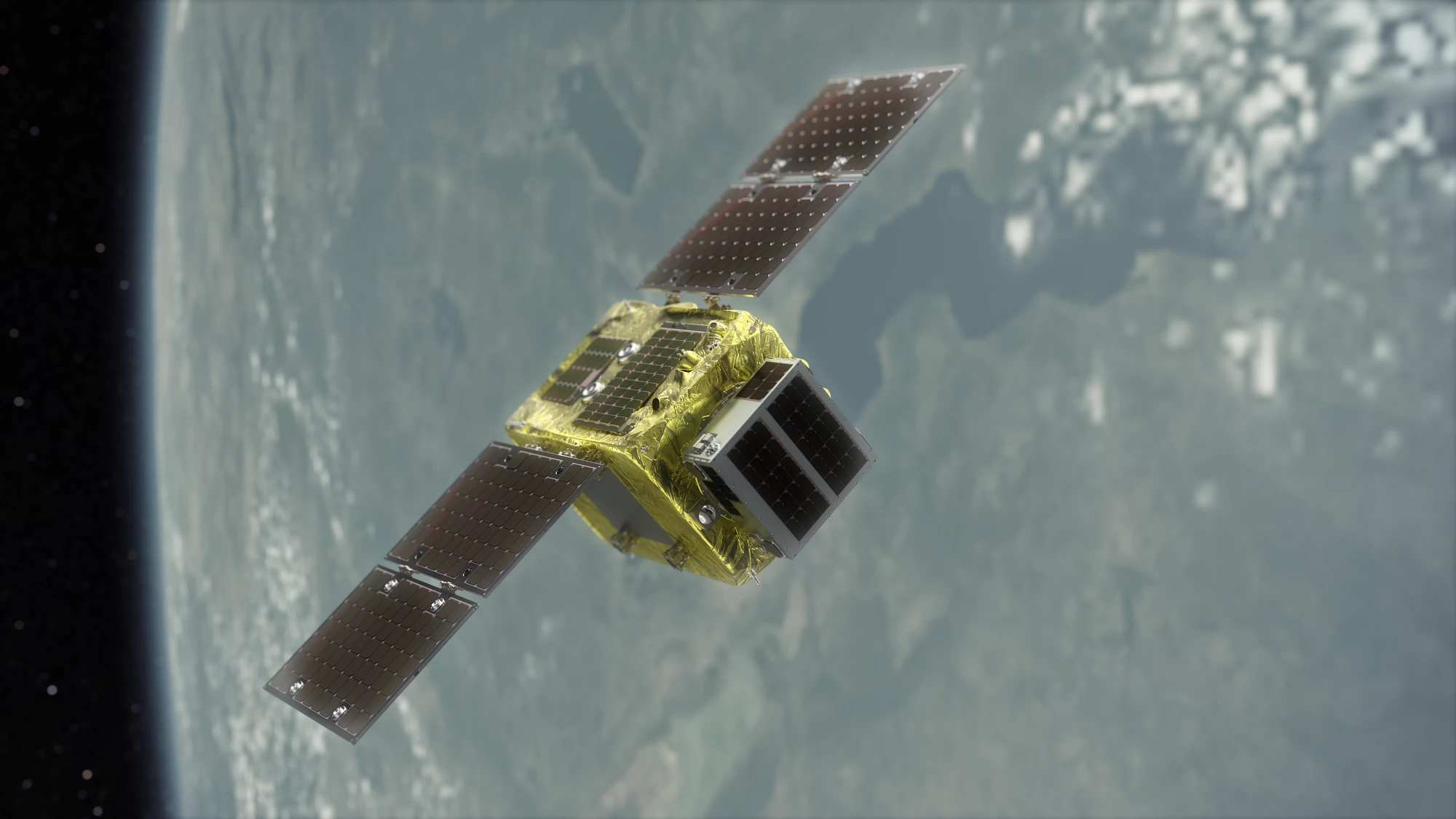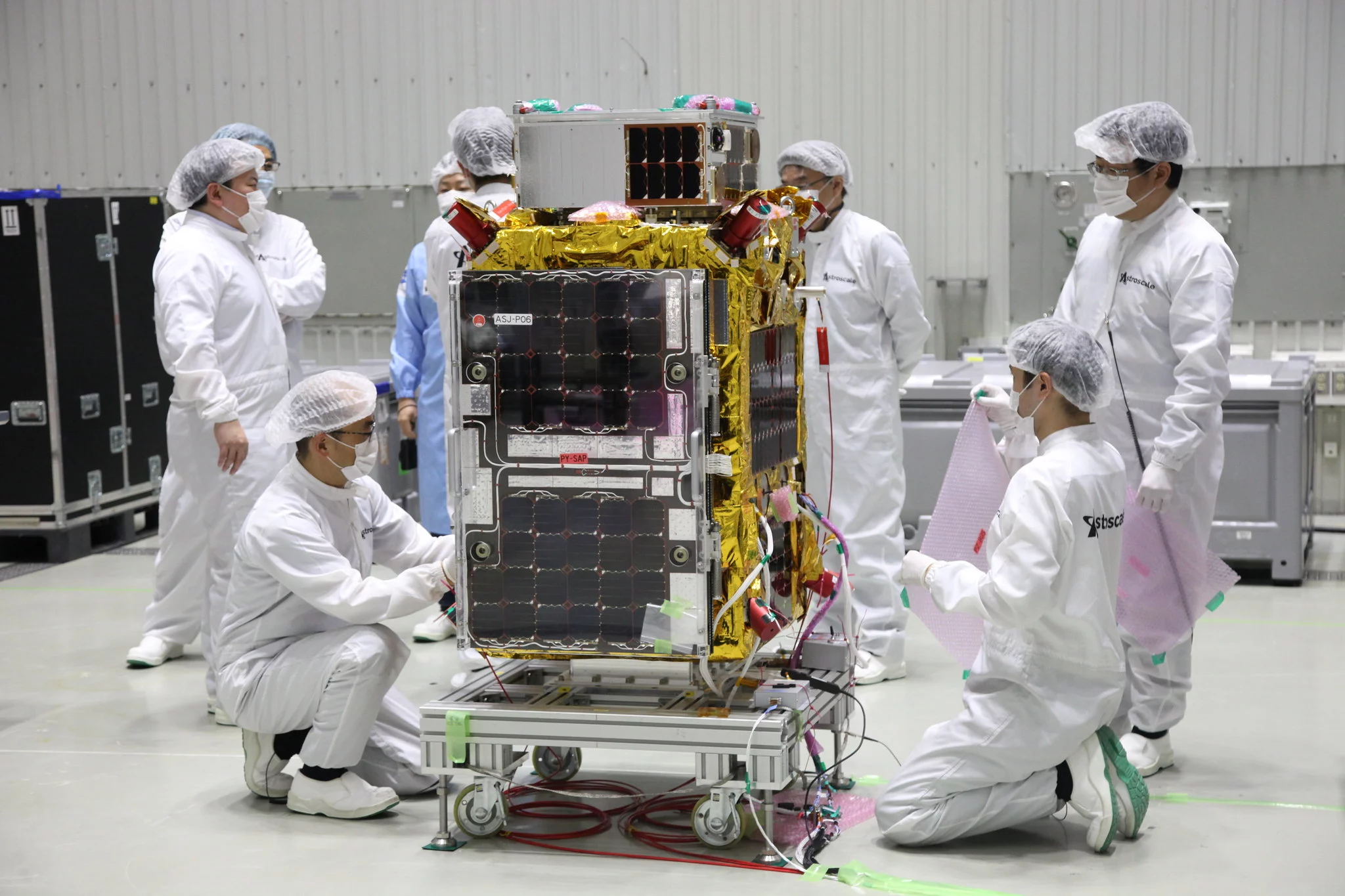Private orbital debris removal company Astroscale has validated its magnetic capture system that is designed to tackle the problem of space debris. Its End-of-Life Services by Astroscale-demonstration (ELSA-d) servicer satellite managed to capture a simulated piece of space debris in orbit for the first time using the system.
Space debris is a serious and growing problem as popular orbits around the Earth become increasingly cluttered with defunct satellites, boosters, and other flotsam that present the hazard of an increased probability of a bit of debris striking a working spacecraft at hypersonic speeds.
In recent years, there have been a number of proposals put forward to deal with this, including devices installed on satellites to increase atmospheric drag as well as experimental capture devices. In general, the most promising technology has involved end-of-life systems installed in new spacecraft, or spacecraft that can rendezvous with aging satellites still capable of maintaining attitude to deorbit them.
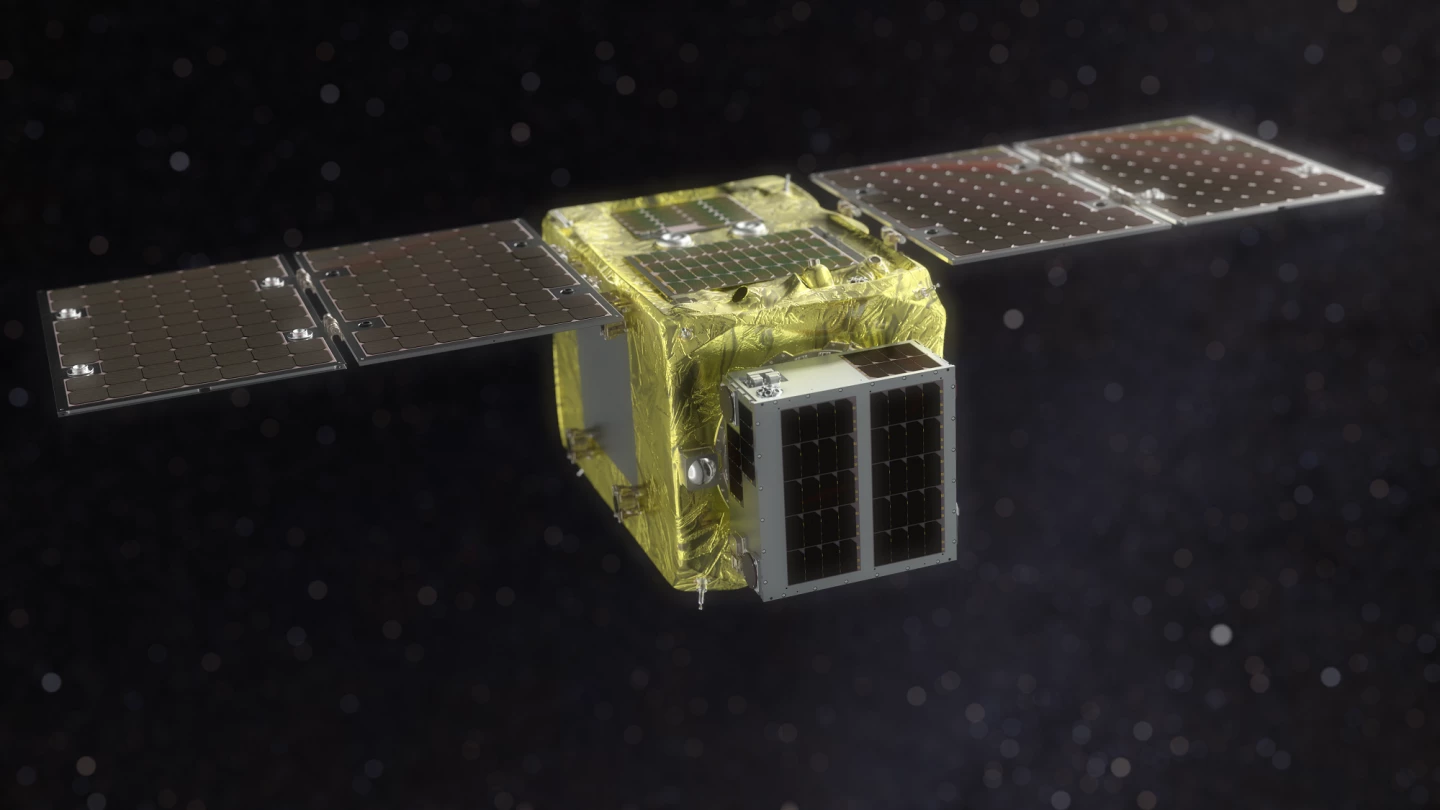
A trickier problem is dealing with satellites and other objects that are without power and tumbling out of control, and it is these Astroscale is targeting with its technology being tested in by ELSA-d, which consists of the 175-kg (385-lb) servicer module and the 17-kg (37-lb) client module.
Launched on March 22, 2021 from the Baikonur Cosmodrome, ELSA-d went into orbit at an altitude of about 550 km (340 miles) before going through a commissioning phase where its systems were thoroughly tested and certified. Now, in phase 3a of the demonstrations phase, it has proven its ability to repeatedly capture another satellite.
In the test carried out on August 25, the servicer extended its capture mechanism, which was locked to the client module by a special metal disc with an optical target embossed on it. The client was then pushed away from the servicer, which withdrew the capture mechanism before re-extending it and recapturing the client several times while the Mission Operations and Ground Segment teams supervised the operation and calibrated the rendezvous sensors.
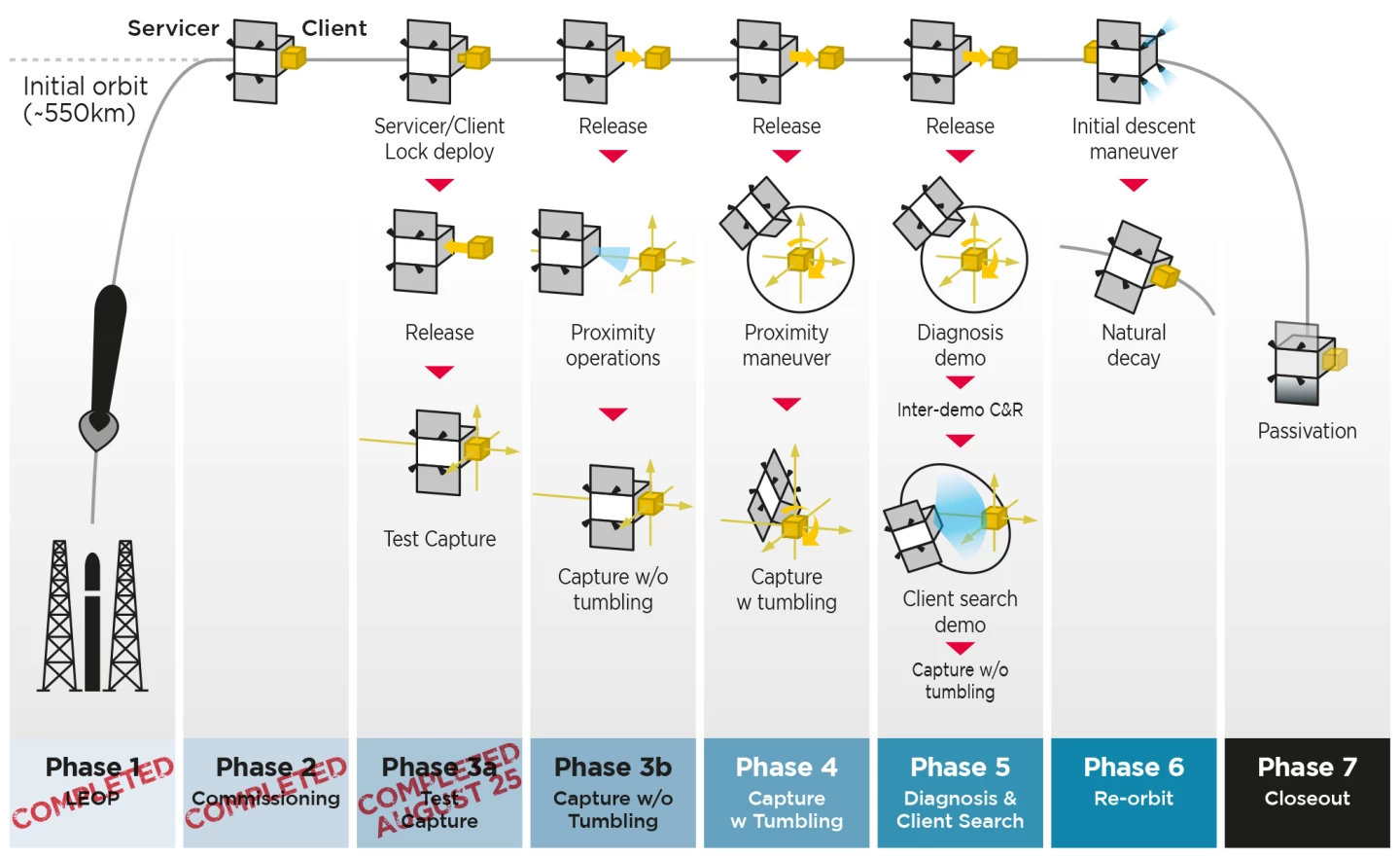
The project is now scheduled to move on to Phase 3b, where ELSA-d will practice autonomously maneuvering in the proximity of the non-tumbling client before capture. This will be followed by Phase 4, which will involve capturing a tumbling client, then Phase 5 where ELSA-D will fly around the client and inspect it. For Phase 6, ELSA-d will deorbit with the client and then move into Phase 7, where the spacecraft dumps all propellants and battery fluids before hitting the atmosphere.
"This has been a fantastic first step in validating all the key technologies for rendezvous and proximity operations and capture in space," says Nobu Okada, Founder & CEO of Astroscale. "We are proud to have proven our magnetic capture capabilities and excited to drive on-orbit servicing forward with ELSA-d."
The video below discusses ELSA-d.
Source: Astroscale

